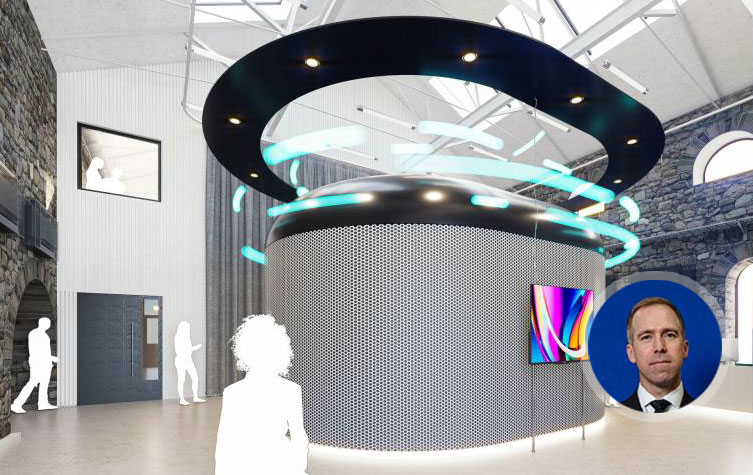This sector-agnostic digital twin facility begins the fusion of the virtual and physical worlds, offering unprecedented opportunities in optimising processes and revolutionising decision-making.
I have blogged before about how connected digital twins, augmented and virtual reality will begin to blur the boundaries between what's real and what's not. A fusion of the virtual and physical worlds, a revolution in how we interact with information no less profound than the introduction of the internet. With the creation of the Reality Emulator, the world that is coming moves a little closer towards us.
It’s a world where you can begin to optimize a lot of deeply inefficient processes from the profound to the mundane. For example, I have argued that it will change the nature of power in the international system, creating metaverse economies and moving deterrence ‘beyond the geo’ of geopolitics – which is about as profound as it gets. As for the mundane, digital twins of household appliances will facilitate telepresent maintenance. No more waiting for a heating engineer to physically visit to repair your boiler. Instead, they can guide you through the process in real-time using augmented reality, providing instant assistance and making home maintenance more efficient, less expensive and less intrusive.
BDFI: Pioneering Sociotechnical Futures
Hence my interest in the BDFI, part of the University of Bristol and the visionary behind the Reality Emulator. It’s an Institute at the forefront of digital innovation. And it’s not just the tech that attracts. Its mission aligns closely with Fujitsu’s Technology and Service Vision (FTSV), focusing on creating inclusive, prosperous, and sustainable digital societies.
Globally Unique
The Reality Emulator is unique globally, offering a reconfigurable and programmable platform for co-creating future digital solutions. Its applications span sectors, from improving city traffic flows and manufacturing processes to exploring smart classrooms and simulating natural disasters. It offers novel experience-based, iterative and immersive approaches, and access to a rich environment of real-world research and experimentation platforms, advanced and emerging technologies, and open data platforms from a powerful data centre infrastructure connected to the facility’s immersive experience environments.
By being fully reconfigurable and programmable, teams can make changes to their new technology, system or scenario and see how it alters potential outcomes to inform design and optimisation. The Reality Emulator will help us to gain new insights, and to mitigate the challenges and seize opportunities brought by digital technologies.
Ultra-high performance computing and network capabilities
Fujitsu is the technology partner responsible for the delivery and management of the core infrastructure that will support the facility, including:
- Software defined data centre platform (SDDC)
- Data service platform
- High performance network platform (HPN) – including private 5G
- Management, Monitoring & Integration platform (MM&I)
The computing power demanded of such an immersive system is ultra-high performance, and will harness similarly ultra-high performance network connectivity, sensors and actuators together with reconfigurable, programmable computing and the additional capability to host new technologies emerging from research labs. But Fujitsu’s real added value comes in our role as digital integrator, responsible for the interoperability of the entire system, to the defined standards set out by the University.
We are also able to leverage our partner ecosystem to achieve the digital outcomes customers want through collaboration and co-creation. Technology underpinning the Reality Emulator has been supplied by partners including Cutter Group, DataDog, Ericsson 5G, Juniper Networks, and VMware.
Unleashing Digital Innovation
Aside from our specific role in this project, the Reality Emulator genuinely excites me as its applications are so wide, unleashing opportunities to tackle some of the most important social, economic and environmental challenges. The facility will allow real-time data monitoring and analysis, and the creation of 3D visualisation models. This in turn will allow collaborative experimentation, iterative design and development of new digital technologies, as well as the emulation of future scenarios on a scale and in a way not previously possible.
A Multi-Sensory, Collaborative Experience
Local and remote teams will have the opportunity to experience and interact with digital models of physical worlds. Interdisciplinary, cross-sector teams will be able to visualise and interact with these future scenarios in a multi-person shared Immersive Workspace and XR Suite. These allow real-time interaction with the digital model in a virtual multi-sensory environment. Others can join in the experience by accessing the same scenarios in real-time via VR headsets, whether elsewhere on campus, at partner or collaborator sites, or at other locations around the world.
Looking Forward
The Reality Emulator is a game-changer in digital innovation, thanks to its advanced computing, data analytics, and immersive capabilities. Its applications will be defined by our imagination. Whether in Government, business, or academia, I urge you to try it – and I eagerly anticipate hearing more about the way it helps you, and us, define and build the future.
Stay tuned for further developments and insights.

Written by
Keith Dear
Managing Director of Fujitsu’s Centre for Cognitive and Advanced Technologies
Formerly a Royal Air Force Intelligence Officer and Expert Advisor to the Prime Minister, he holds a Doctorate in Experimental Psychology from the University of Oxford, an Exec-MBA from the University of Cambridge, and an MA from King’s College London.
LinkedIn
